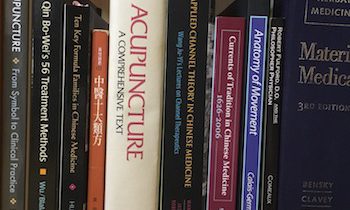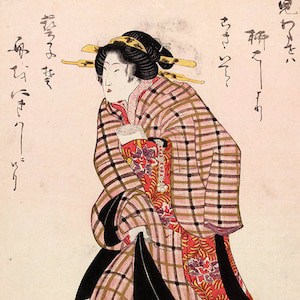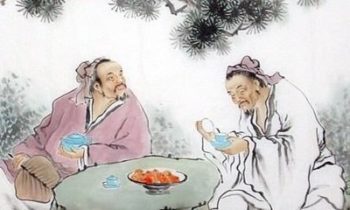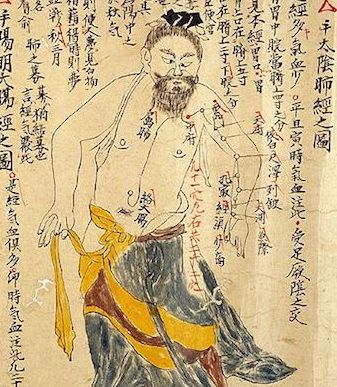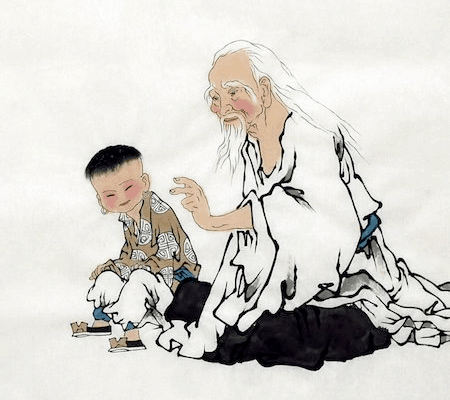Nov 14, 2017 | Acupuncture, Herbal Medicine, History
Eastland Press has been bringing books on Oriental medicine from Chinese into English since the early days of Americans studying the traditional medicine of Asia. Actually, from even before there was a market for this kind of material. In this episode we go into the...Oct 3, 2017 | Acupuncture
It is common knowledge that acupuncture is quite effective in the treatment of pain. However, for many of us acupuncturists we feel a bit uneasy about treating back pain in pregnant women, as we don’t want to move too much qi and blood in a pregnant woman. In this...Sep 19, 2017 | Acupuncture, Cultivation, Herbal Medicine
Our guest in this episode is a long time practitioner and teacher of Chinese medicine. Our discussion ranges through a number of different topics from approaching the classics in Chinese medicine, to how our practices season us and lead us in certain directions over...Aug 31, 2017 | Acupuncture
Every acupuncturist is intimately familiar with the points and functions of the 12 commonly used acupuncture channels, as well as the functions and use of the 8 extraordinary meridians. In our studies we might have heard about the divergent channels, but for the most...Aug 31, 2017 | Acupuncture, Herbal Medicine
Recurrent ear infections are a common complaint with children, and it's clear that the conventional multiple courses of antibiotics are rarely effective in the long run. In this episode we take a look at specific patterns of disharmony that lead to this common...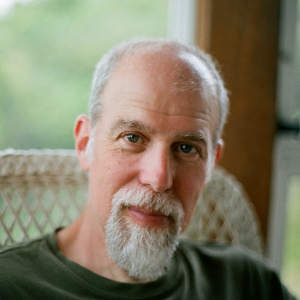
I am board-certified pediatrician with over 35 years of clinical experience working with children. In addition, I am an author, artist, and longtime student of Chinese medicine and Taichi. I am the author of “Fire Child Water Child” as well as a contributor to a number of textbooks on Integrative and Chinese medicine. I have also published a number of children’s books that incorporate principles of Eastern philosophy. I call myself a “developmental acupuncturist” because my subspecialty is empowering children (and parents) to develop their unique integrity (de) based on the principles of Eastern medicine which have for centuries recognized the intimate ecological relationship between our health and our environment. This approach respects the inseparability of mind, body and spirit and promotes a deeper understanding of what it means to be healthy.
I am a fellow in the American Academy of Pediatrics, with a subspecialty in Developmental Pediatrics and serve as a member of the AAP section on Developmental Disabilities. I am a Clinical Assistant Professor of Family & Community Medicine at NY Medical College and a long-time member of the American Academy of Medical Acupuncture. I serve on several boards that promote holistic health through body-mind medicine.
I have a consultation practice in New York where I specialize in treating complex and chronic medical conditions that affect a child’s growth and development. I am co-founder along with Moshe Heller of Jingshen Pediatrics Training program that promotes the application of Chinese Medicine in children.
The intention of this presentation is to inspire the growth of your practice through the spirit of Chinese medicine. What I mean by this is that when one takes Chinese medicine as a Way of life (Dao), it becomes a way of making a living…or better said, a way of making your lifework more lively. I call myself a “developmental acupuncturist” because I have seen my work become play over the past 35 years as I engage in promoting growth and development in families. As a pediatrician, children have taught me how to find “common ground” on which we can live a lively life. From a Daoist perspective, this means having a childlike wonder in the way things change right before our eyes. To do this we must always considering “things” in context. Whenever we take things out of context we cause suffering. Western medicine fails to understand this fundamental truth. What may be daunting for new practitioners is learning how to establish a lively practice that it grows strong roots so that it can withstand the challenges of change that are the essence of life. In this workshop we will cover some of the ways to do this successfully based on what I’ve learned from children over these past three decades.
• Learn how to employ the principles of Chinese medicine in growing your practice
• Learn how to develop common ground with your patients for greater success
• Learn how to grow the De in the Dao of practicing medicine (what makes you uniquely suited to be a healer?)
• Learn how to be a Sanjiao for your patients
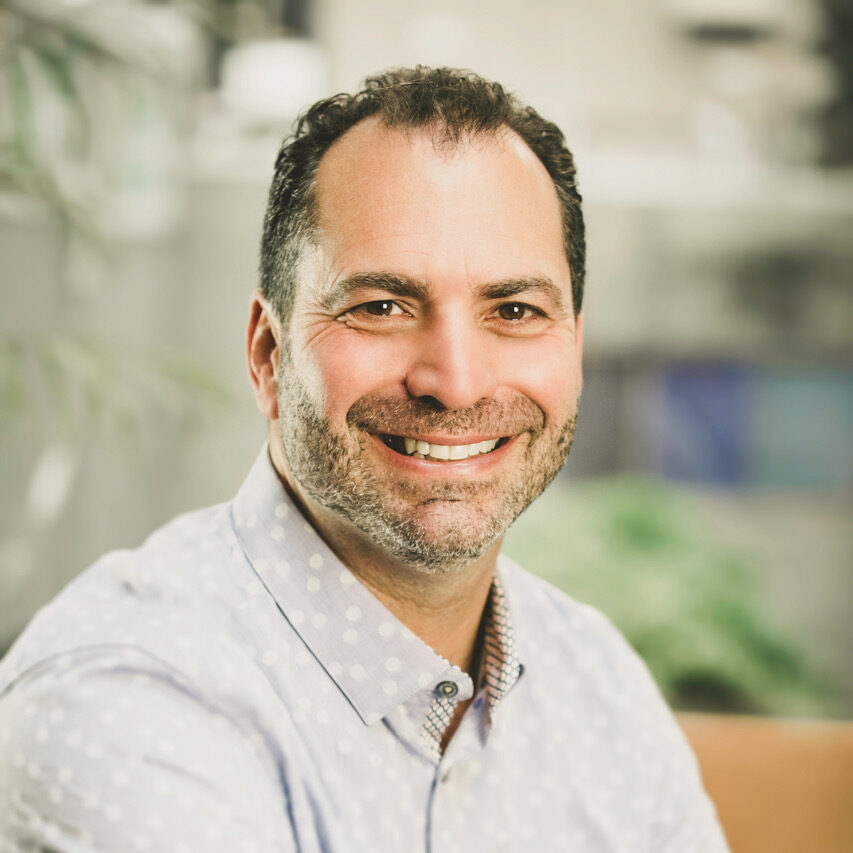
Lorne Brown, B.Sc., CPA, Dr.TCM, FABORM, CHt, CLT
Lorne Brown is the Clinical Director of Acubalance Wellness Centre, and the Founder of Healthy Seminars, a leading platform for online continuing education in acupuncture and integrative medicine.
After earning a B.Sc. in Mathematics, Lorne began his professional journey as a Chartered Professional Accountant (CPA), His passion for health and wellness led him to Vancouver, where he earned his Doctor of Traditional Chinese Medicine (Dr.TCM).
Lorne founded Acubalance Wellness Centre, Canada’s first TCM clinic focused on reproductive health, and Healthy Seminars, a groundbreaking online platform that has become a trusted resource for continuing education in acupuncture and integrative health. He also launched the Integrative Fertility Symposium, which sold out all five years it was held.
In addition to his clinical and educational work, Lorne is the author of Missing the Point: Why Acupuncturists Fail and What They Need to Know to Succeed and hosts the Conscious Fertility Podcast.
Why do some acupuncturists thrive, seamlessly transitioning from one success to another, while others struggle to get their practices off the ground? In this presentation Dr. Lorne Brown reveals a simple, actionable process to help practitioners transform their fear of failure into the courage to take risks and develop the skills necessary for lasting success.
Designed for acupuncture students and practitioners seeking to create a prosperous practice with integrity, this interactive talk goes beyond traditional TCM education. Dr. Brown explores the often-overlooked elements of success: cultivating a growth-oriented mindset, understanding the business side of practice, and creating meaningful value for patients. Drawing from his personal experiences and proven strategies, he provides practical insights to overcome common challenges and build a thriving practice.
Attendees will leave with tools to balance clinical excellence with entrepreneurial acumen, ensuring a financially sustainable, patient-focused, and rewarding career.
• Develop a business mindset to complement their clinical expertise, understanding that successful acupuncturists are also entrepreneurs.
• Overcome self-limiting beliefs around money.
• How to create value for patients by aligning services with their needs and embracing the principles of giving and receiving.
• Understand how prosperity arises from taking calculated risks and applying a simple, repeatable process for success in the face of fear.
• Apply effective strategies for attracting and retaining patients, ensuring financial sustainability while delivering exceptional care
• Implement strategies for hiring administrative staff and associates to streamline operations, scale the practice, and maintain the highest standards of care.
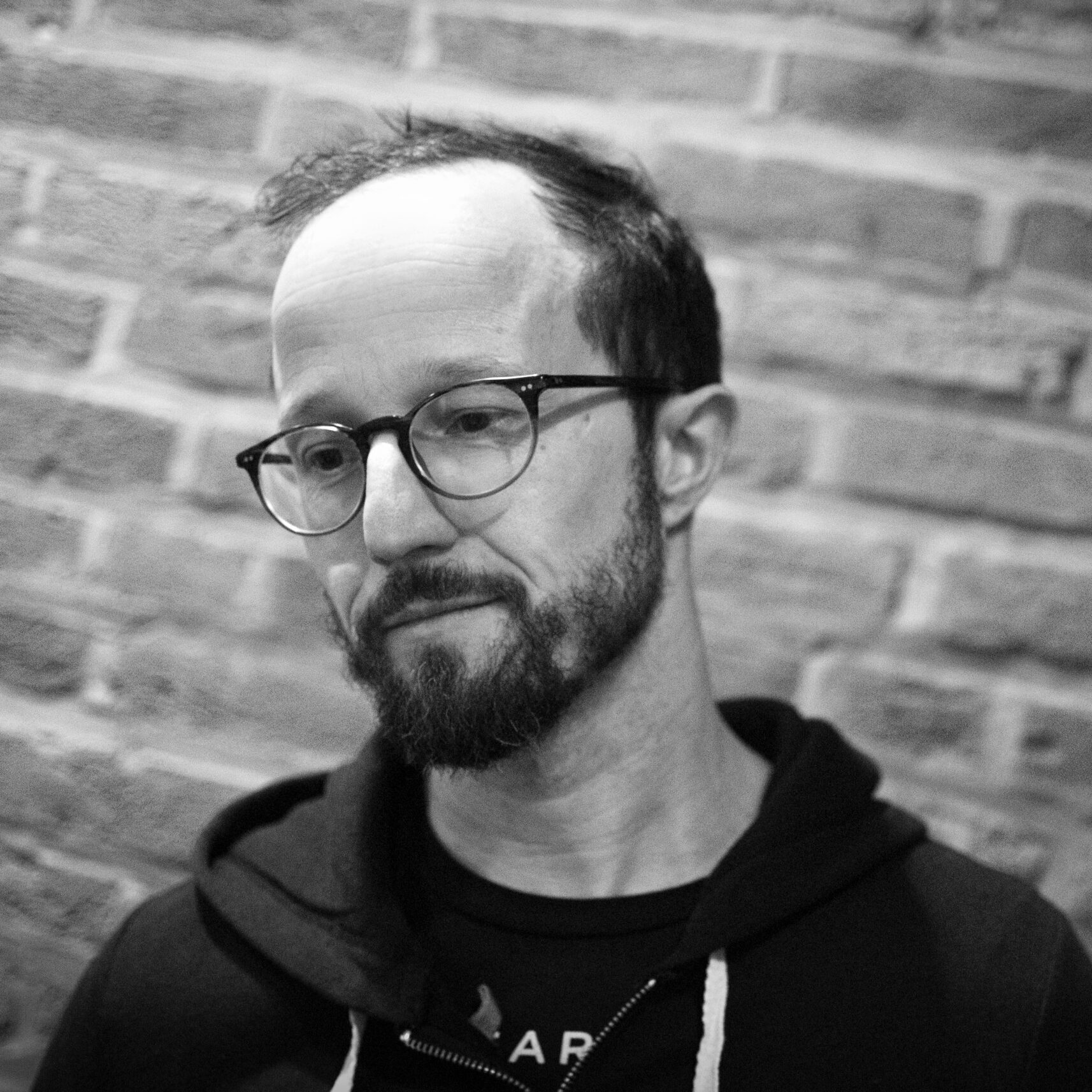
Doug Holton is a digital customer experience leader who has spent 25+ years fostering environments of collaboration and creative problem-solving—changing the way the world perceives and engages with brands through informed insights, thoughtful design, and bold ideas. From 2004-2009, Doug led Ashtanga classes and built a community at Pureflow Yoga. He is also an established songwriter, composer, and musician under the moniker, The Life in You. Doug lives in Philadelphia with his wife and a menagerie of rescue animals, and has two sons out there putting their individual marks on the world.
If you look at any list entitled, “Word of the Year,” you’ll find “authenticity” at or near the top. Although the word has been largely co-opted into marketing speak, it can have tremendous value, especially for the acupuncture, wellness practitioners, and Oriental medicine community. Branding is not nor has it ever been about colors or logos. It’s about how the company, service, or product makes you feel. Ask yourself, What do people and patients remember about your brand when they finish a session? What do they say when talking to a friend about their experience? And why do they come back? You, your employees, your digital persona—website, social media, etc.—are your brand.
Together we’ll explore a variety of ways to help get at what makes you truly special in your community and in the marketplace. And we’ll look at avenues to authentically tell that story and bring more people to you and your business in a natural, organic way.
• Draft “elevator pitch” of your brand story that can help guide how you describe your practice in person and online
• Deeper grasp of the power of brand continuity across channels
• List of actionable ways to improve your website content and social media messaging
• Better understanding of how to select the right creative and marketing partners
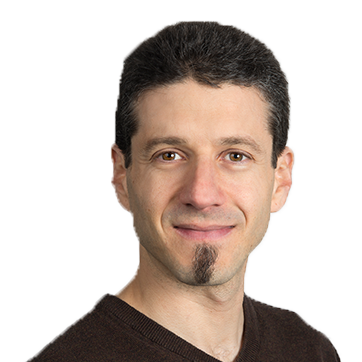
Adam is an acupuncturist and Chinese herbalist licensed by the PA Board of Medicine and certified in Oriental Medicine by the National Certification Commission for Acupuncture and Oriental Medicine. Adam currently practices in Philadelphia, PA, where he has been billing insurance for over 20 years. He graduated with a Masters in Acupuncture and Oriental Medicine from the New England School of Acupuncture. Adam has completed extensive advanced study in Sports Medicine and Orthopedic acupuncture techniques. He was the chief editor of “Sports Medicine Acupuncture”, a landmark text on the acupuncture treatment of orthopedic conditions. He has also worked on four clinical trials at the University of Pennsylvania, all of which were related to acupuncture and cancer symptoms. Adam has a BA in Psychology from Washington Univ. in St. Louis. You might see him hiking or biking on the trails of the Wissahickon, where he loves to hang out!
This presentation will provide attendees with all of the information needed to decide whether or not to opt-in to insurance billing for their practice. There will be a brief review of how insurance billing and coding works for acupuncture, although this will NOT include step-by-step instructions on the process of billing insurance companies. There will be a thorough discussion on how insurance billing effects an acupuncture practice – from cash flow to treatment planning to hiring a biller or staff and other relevant topics. The presentation will cover many of the different factors for attendees to consider before making the decision of whether or not to join the insurance billing world, including regional differences in payment and competition, the effects on accessibility to acupuncture treatment, and the marketing power of being in-network with insurance companies. There will also be comparisons between cash-based practices and insurance-based practices. At the completion of the presentation, attendees will be well-informed enough to make the decision of whether or not they and their practices are a good match for insurance billing.
• Understand how acupuncture procedure codes work and how they are meant to be used.
• Understand the general process of billing.
• Understand some of the major differences between cash-based and insurance-based practices.
• Be able to make the decision of whether or not to opt-in to insurance billing based on personal and business factors.
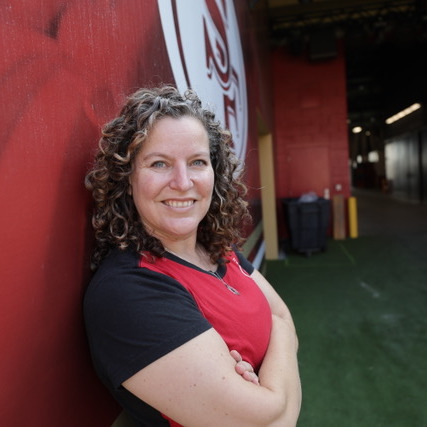
Dr. Jenny Nieters, L.Ac., DACM, is a highly experienced sports acupuncturist and educator specializing in the application of acupuncture and traditional Chinese medicine to enhance athletic performance and facilitate injury recovery. With extensive experience treating professional, collegiate, and Olympic athletes across a variety of sports, Dr. Nieters implements a comprehensive approach to addressing sports-related conditions. As an educator, she offers in-depth workshops and courses designed to help fellow acupuncturists deepen their understanding of sports acupuncture, its clinical applications, and its benefits. Her teaching approach empowers practitioners to expand their skill set and confidently engage with the athletic community.
Specialization is not just about focusing on a niche; it’s about manifesting a vision that is congruent with your purpose and then transforming your passion into expertise.
In this session, Dr. Jenny Nieters will share her inspiring journey toward becoming a leading sports acupuncturist who works with professional and collegiate athletes. With a focus on performance enhancement, injury recovery, and holistic well-being, Dr. Nieters will demonstrate how she successfully carved out a specialized role within the sports acupuncture field. Attendees will gain valuable insights into how to cultivate their own specialization, develop expertise, and turn their professional vision into reality. Dr. Nieters will also offer practical, actionable strategies to help practitioners build a meaningful and impactful career in their chosen field.
• Clarify Your Passion and Niche: Identify a subject you’re passionate about and lay the groundwork to build expertise in that area.
• Unlock the History and Future of Your Field: Discover the evolution of your subject, key pioneers, and current trends shaping its future.
• Learn from the Best: Dive deep into the work and impact of leading experts, and create a plan to follow in their footsteps.
• Craft Your Success Blueprint: Identify your values and guiding principles. Develop a clear 5- and 10-year plan, and design a support system to fuel your growth and reach your highest potential.
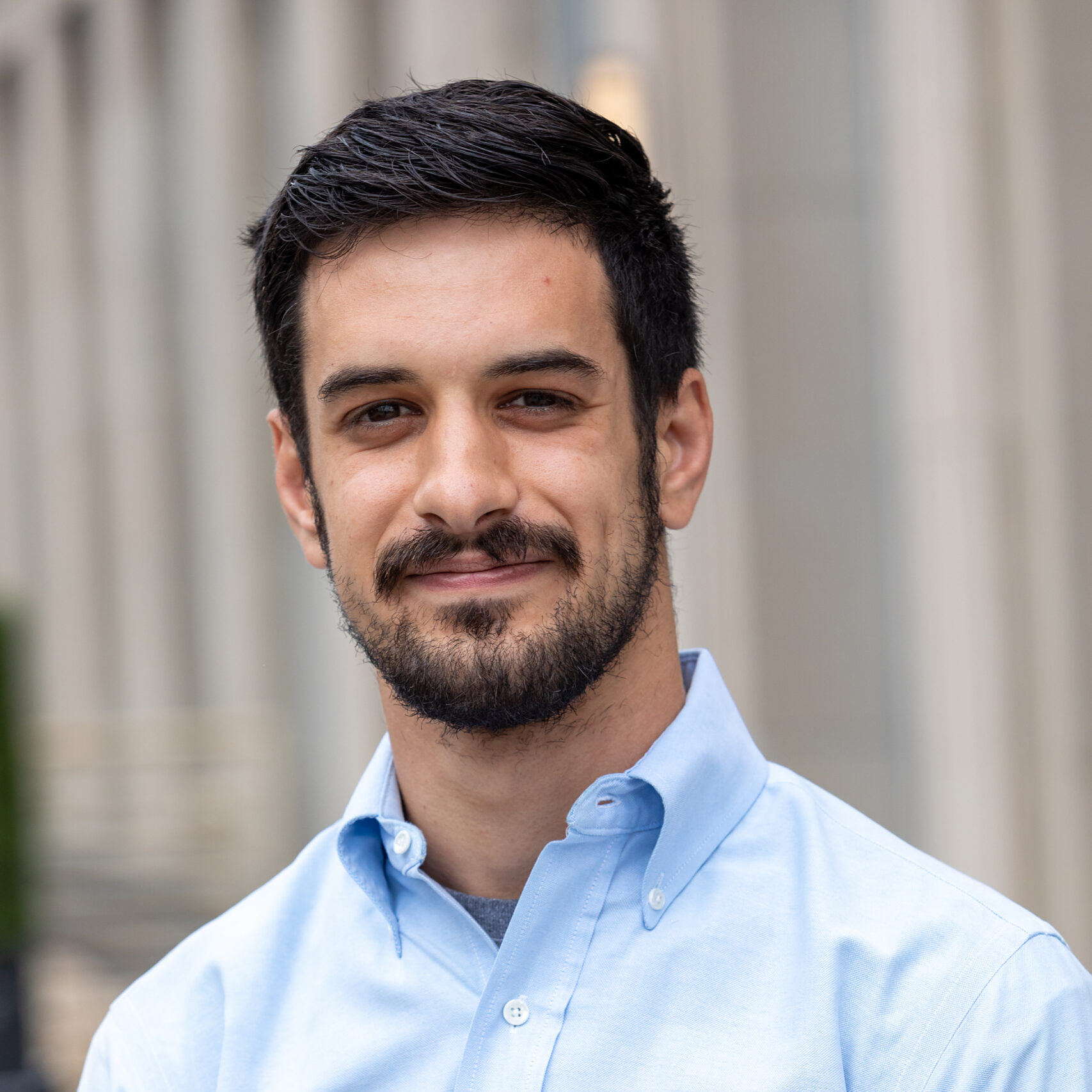
George Pitsakis is a small business owner and business coach in the nonprofit sector. He believes that financial literacy and strong business operations allow small business owners to do right for themselves and their communities. George owns a Muay Thai gym in South Philadelphia, and consults at The Merchants Fund, a public charity that provides grants and coaching to Philadelphia small businesses. In his spare time he can be found mulling around his small South Jersey farm and hunting behind his dog, Buster.
Understanding your business’ finances and operations is integral to maximizing your profitability and building the business that YOU want to own. This presentation highlights the basics of small business financials and operations–laying out a clear framework for starting or upgrading your bookkeeping, financial analysis and business planning.
• Understand the framework of bookkeeping, accounting, and small business financials.
• Review a basic profit and loss statement, pertinent to acupuncture businesses.
• Define must haves for financial literacy, bookkeeping, and business operations.
• Provide a roadmap for building out a bookkeeping system and strategic plan.
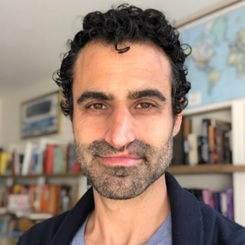
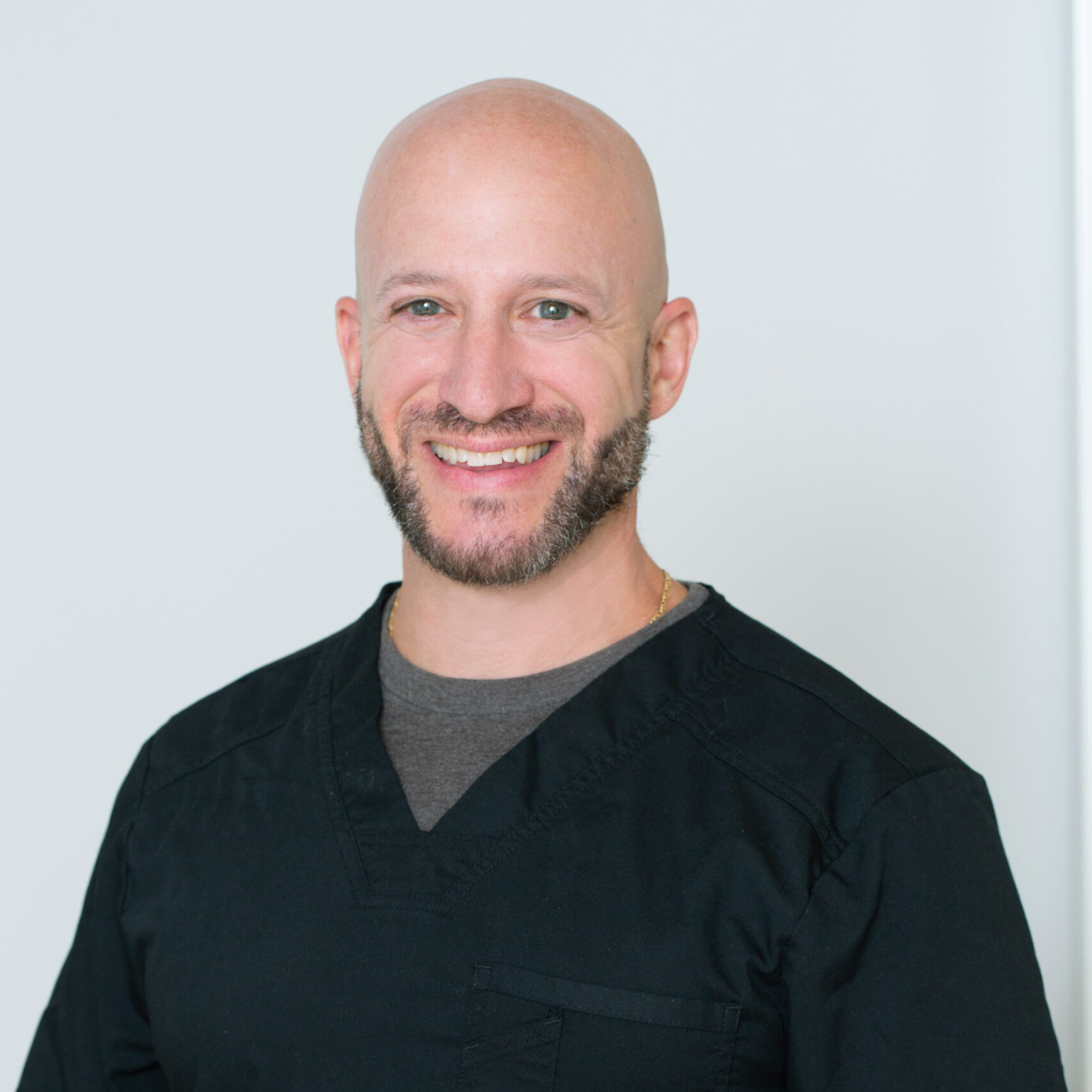
Ryan Diener, L.Ac.
Ryan strives to help his patients and his community resolve their health challenges, so their health never limits their lives. He co-founded Holistic Health Associates in 2005 which started as a 3-person company that has grown to 2 locations and 32 staff members. In 2024 his offices average services provided was more than 400 per week and he has spearheaded a system of sub-specialties to enhance his providers’ ability to grow and thrive individually while working in a collective.
He has apprenticed with incredible leaders in our industry including Lonny Jarrett, Jeffrey Yuen, Andrew Miles and Dr. Leon Hammer with whom he studied closely and is one of only 10 certified teachers in the country for Contemporary Chinese Pulse Diagnosis.
Ryan has served as co-professor of advanced practice management for the PhD program at Maryland University of Integrative Health and as President of the Contemporary Oriental Medicine Foundation.
Steven Mavros, L.OM.
Steven Mavros is the co-founder and owner of the Healing Arts Center in Philadelphia and has been practicing acupuncture for women’s health and infertility since 2001. With the help of an amazing team of now 11 practitioners, HAC has grown to 5 locations with branches across the city, suburbs and exurbs. He pioneered brining acupuncture into every fertility clinic in Philadelphia, South Jersey and Delaware. His commitment to increasing awareness of the struggles of infertility includes hosting the Waiting for Babies podcast, bringing the Art of Infertility exhibition to Philadelphia, on-air media interviews, and sponsoring PCOS Challenge & the Cade Foundation IVF grants. He’s a President-Emeritus of the Association for Professional Acupuncture in PA and Chair-Emeritus of the Integrative Medicine SIG group of the American Society of Reproductive Medicine.
The “Bigger is Better in Acupuncture” webcast, featuring East Asian entrepreneurs Ryan Diener and Steve Mavros provide an in-depth exploration of the complexities and benefits associated with expanding an acupuncture practice to multiple locations. This engaging two-hour session will equip attendees with actionable insights into managing multiple locations, building effective teams, navigating real estate decisions, and assessing the suitability of growth for their specific contexts.
● Evaluate the Pros and Cons of Operating Multiple Locations
● Develop Effective Strategies for Managing Teams of Practitioners and Administrative Staff
● Analyze the Pros and Cons of Renting vs. Owning Clinic Space
● Determine if Practice Expansion is the Right Decision
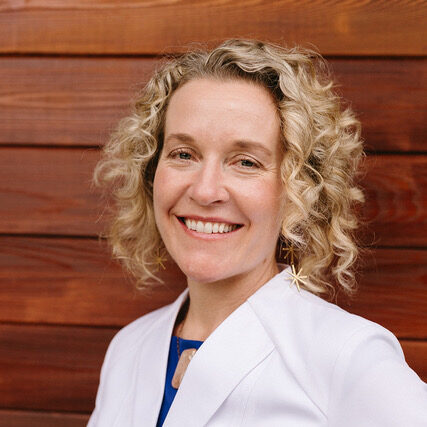
Dr. Elie Cole, DAOM, is a doctor of acupuncture & Chinese medicine. She has enjoyed private practice in Portland, Oregon since 2008. She started out at PCOM San Diego then received a Master of Science from Oregon College of Oriental Medicine (OCOM) in 2007 and a doctorate of Acupuncture & Oriental Medicine from OCOM in 2016.
She built a thriving Chinese medicine practice by creating relationships with local biomedical providers by doing lunch and learn presentations at local clinics. Doctors, nurses, and physician assistants have consistently referred patients to her clinic over the last 10 years.
Chinese Medicine Explained: Your Blueprint for Communicating with Biomedical Providers (CME) came out of her doctoral capstone project. She spent 2 years creating this program and then another 2 years improving upon it, testing it, and preparing it as a marketing tool to help acupuncturists fill their practice with new patients with as little effort as possible while creating lasting relationships with both the patients and their referring providers.
As Chinese medicine providers, we are tasked with a challenge we were not trained for: take foreign concepts and language we learned over at least 4 years of Chinese medicine school and translate it into something our patients and referring providers can understand without thinking we’re weird.
How do we talk about Chinese medicine without initiating a confusing discussion about Qi, Yin, & Yang? It’s crucial to be able to communicate how Chinese medicine works without sounding ridiculous to the typical western-educated patient or provider.
When we learn how to communicate simply and clearly what we are doing in our medicine, then we can more easily translate that into a treatment plan so our patients understand both what we are doing with their health as well as what to expect with their treatment plan, and their time and financial commitment.
• To replace the words Qi, Yin, & Yang with more user-friendly terms when speaking with both patients and biomedical providers
• To understand the more accurate definitions of Qi so you can start using words that don’t involve the mistranslation of Qi as energy
• To learn how to answer patient’s and provider’s most common questions about how Chinese medicine works in simple, effective, and scientific ways.
• How to extract the right info from your patient in order to write a treatment plan
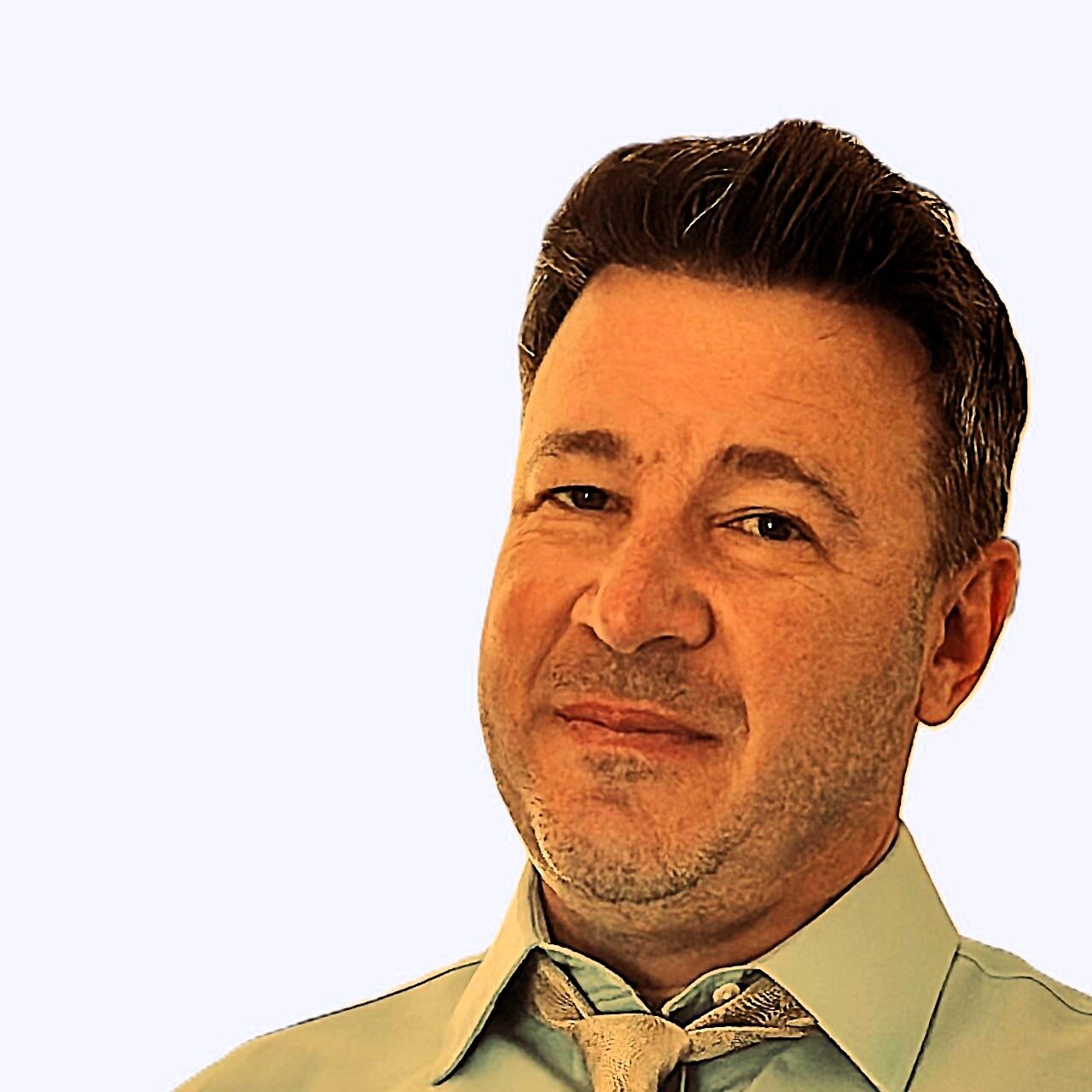
Michael Taromina, Esq., is an expert in acupuncture and herbal medicine law, ethics, and regulations. For over two decades he has litigated, educated, advocated, and authored for the advancement and protection of the AOM profession in the United States. Michael serves as the Chair of the National Certification Commission for Acupuncture and Oriental Medicine’s (NCCAOM) Professional Ethics and Disciplinary Committee. In this capacity, he co-drafted NCCAOM’s Code of Ethics and Grounds for Discipline and currently oversees the adjudication of misconduct cases from all over the country. In 2024, under Michael’s leadership, NCCAOM launched the Acupuncture National Discipline Database—the first national data bank that tracks discipline actions for the profession. Michael has also served as legal counsel to state and national associations.
In the dynamic field of alternative healthcare, understanding the ethics and legal intricacies of practice is essential for practitioners. In this two-hour webcast, Michael Taromina will help practitioners understand and navigate the complexities of professional liability and risk management in an alternative healthcare profession. Topics will include NCCAOM and state codes of ethics, regulations, law, and professional responsibilities. Michael strives to train well-intentioned practitioners on best ethical and legal compliance practices and how to avoid common ethical and legal pitfalls. After the formal presentation concludes, Michael will host a Question and Answers period of pre-submitted topics and allow follow-up questions with the online audience.
● Examine the NCCAOM Code of Ethics in comparison to states and understand practical implications in day-to-day practice
● Preventing damaging professional misconduct complaints.
● Understanding how to apply best practices to avoid risks.
● Identification and understanding of safety and legal liability via frameworks in different practice settings
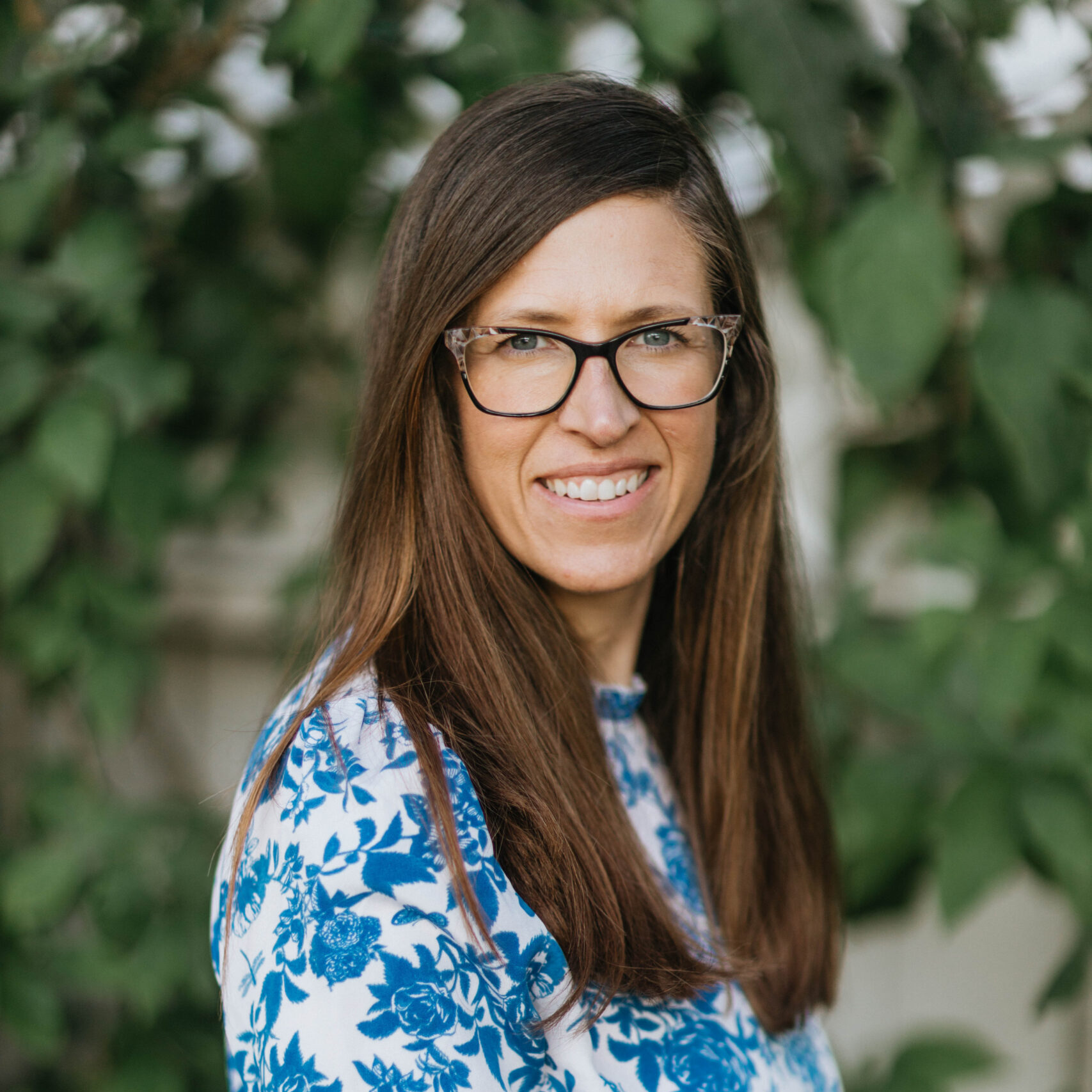
Crystal Anderson: Catalyst of Holistic Wellness with California Mobile Acupuncture Crystal Anderson, founder of California Mobile Acupuncture, is a holistic healthcare expert with a strong academic and professional foundation. She holds a Bachelor’s degree in Biological Sciences from UC Irvine and a Master’s degree from Five Branches University in San Jose. Crystal began her career specializing in fertility and pregnancy at Nurture Acupuncture before expanding her expertise into stroke rehabilitation at El Camino
Hospital’s Stroke Rehab Center.
Inspired by her experiences, Crystal launched California Mobile Acupuncture, providing in-home acupuncture, massage therapy, and nutritional counseling for a variety of conditions, including pain management, stroke recovery, and postpartum care. With a commitment to making holistic wellness accessible and personalized, her business has grown to meet the evolving needs of her clients. Crystal’s unique approach combines traditional healing practices with modern convenience, making a lasting impact on her clients’ health and well-being.
In today’s competitive market, health and wellness professionals need to look beyond the traditional “brick and mortar” business model to grow their practices. Expanding your reach means exploring new partnerships, engaging with your community, and stepping outside your comfort zone to take action. This presentation will guide you through these essential strategies to build a thriving, impactful business.
• Learn how to build mutually beneficial relationships with other businesses and organizations.
• Explore ways to give back and raise your profile through community involvement and charitable giving.
• Recognize how charitable actions and public demonstrations can boost your visibility.
• Understand the value of embracing new opportunities, even when they feel uncomfortable.
• Discover new environments and creative ways to offer your expertise, from corporate settings to gyms and local events.
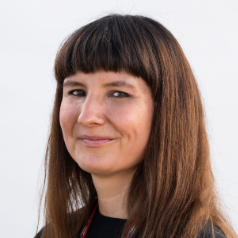
Dr. Wahji Kasten is Dene-Suline, a registered member of the English River First Nations band in Patuanak, Saskatchewan. Wahji Kasten, ND, LAc, MPH received her Bachelor of Science in Chemistry from Antioch College in 2002. After working in a laboratory for several years she decided to pursue a career in medicine where she would be able to help people and utilize her scientific background. She graduated from the National University of Natural Medicine in 2015 with a Doctorate of Naturopathic Medicine and a Master in Acupuncture. She joined the staff of the Lower Elwha Health Clinic in August 2016 as a medical provider in order to offer naturopathic medicine and acupuncture to the tribe and community. In 2024 she completed her Master in Public Health at Johns Hopkins Bloomberg School of Public Health. As a Naturopathic Physician and Acupuncturist she delivers primary care with a science-based, culturally-safe, and harm reduction approach.
There are significant health disparities in rural areas, and even more so in Tribal communities. Unfortunately there is a lack of access to medical care which can compound these issues. Acupuncture and herbal medicine have the potential to play an essential role in addressing these issues, while at the same time providing culturally appropriate care to Tribal citizens. Acupuncture and herbal medicine are effective ways to support patients in rural areas with non-infectious chronic diseases and non-pharmacological pain management.
• Understanding the unmet healthcare needs in rural areas.
• Cultural competency and appropriateness when working with a Tribal community.
• Epidemiology, screening, testing and treatment of Hepatitis C virus.
• Resources for Hepatitis C testing and treatment.
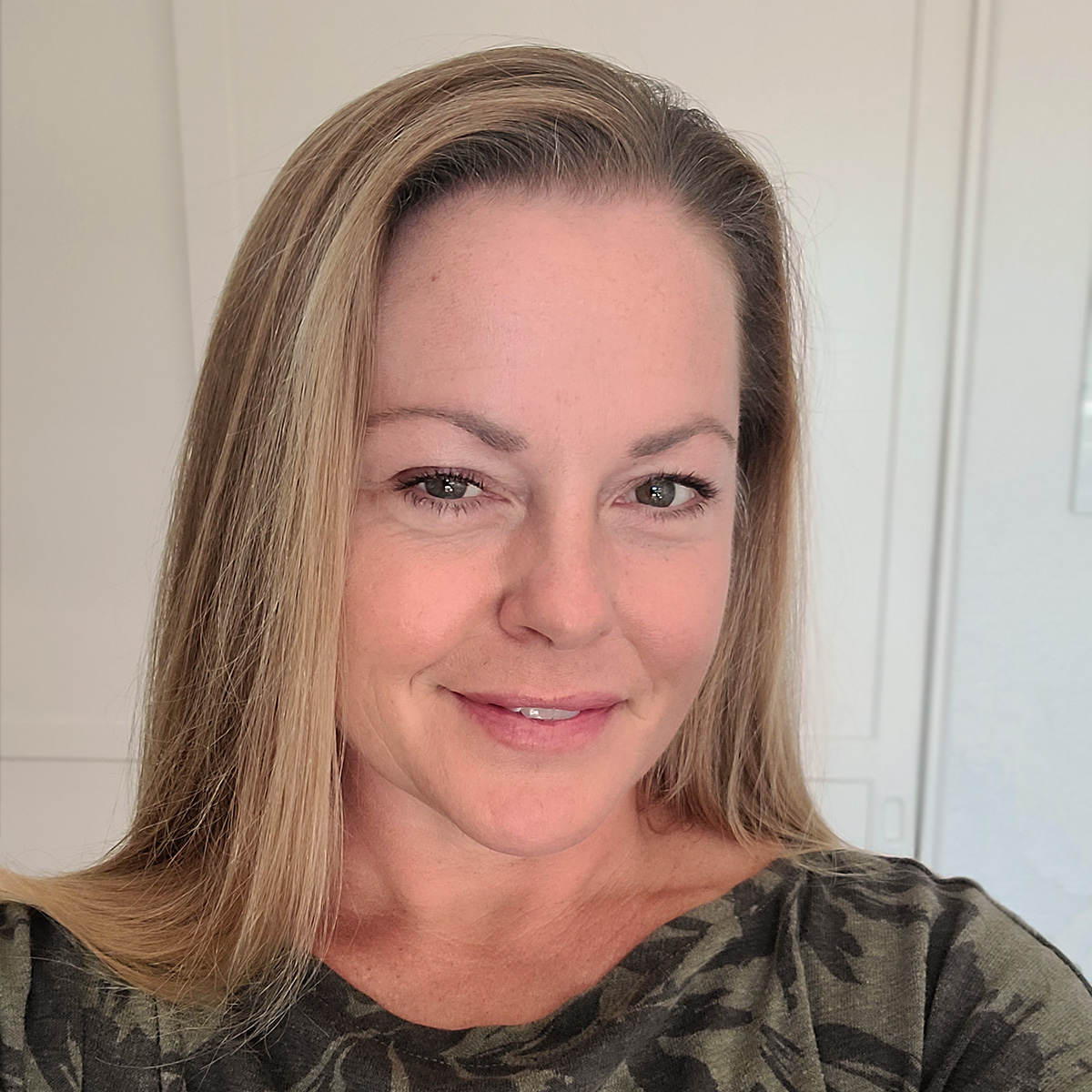
Dana Swanson Rowley is a marketing professional with over twenty years of experience spanning many marketing disciplines and industries.
Past experience as a Marketing Director, Community Manager and Event Planner provides a broad foundation for multiple marketing disciplines, while a love of business and the excitement of start-ups drives desire to help those looking to achieve their business goals.
Dana holds a degree in Sociology from the University of California Santa Barbara. Sociology is the study of groups of people and what motivates them to act. This Sociological knowledge drives unique strategic knowledge, while real world, tactical experience brings expertise at tracking smaller details.
There are times when having too much information can be a problem. Marketing often falls in that category. The world of marketing tactics and techniques is vast and nearly endless, with seemingly so many experts – and they all have a blog telling you exactly what to do, how convenient!
However, the reality is that a simple phrase like “I need to find some clients” can become a web of plans, to-do lists and tools that can serve only to consume your time, and keep you from doing what you started your business for in the first place.
In this presentation, we’ll walk through some key planning steps that will help you organize your efforts, learn how to select which tactics to pursue and realistic strategies for implementing marketing, even with small budgets and teams.
• Learn how to define your niche and identify what population you serve
• Gain a high-level understanding of the marketing landscape and how to prioritize tactics
• Understand how to build a marketing plan that’s realistic and functional
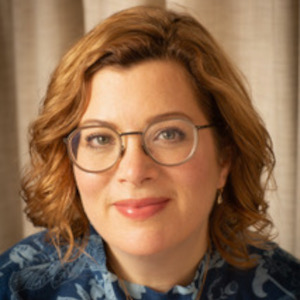
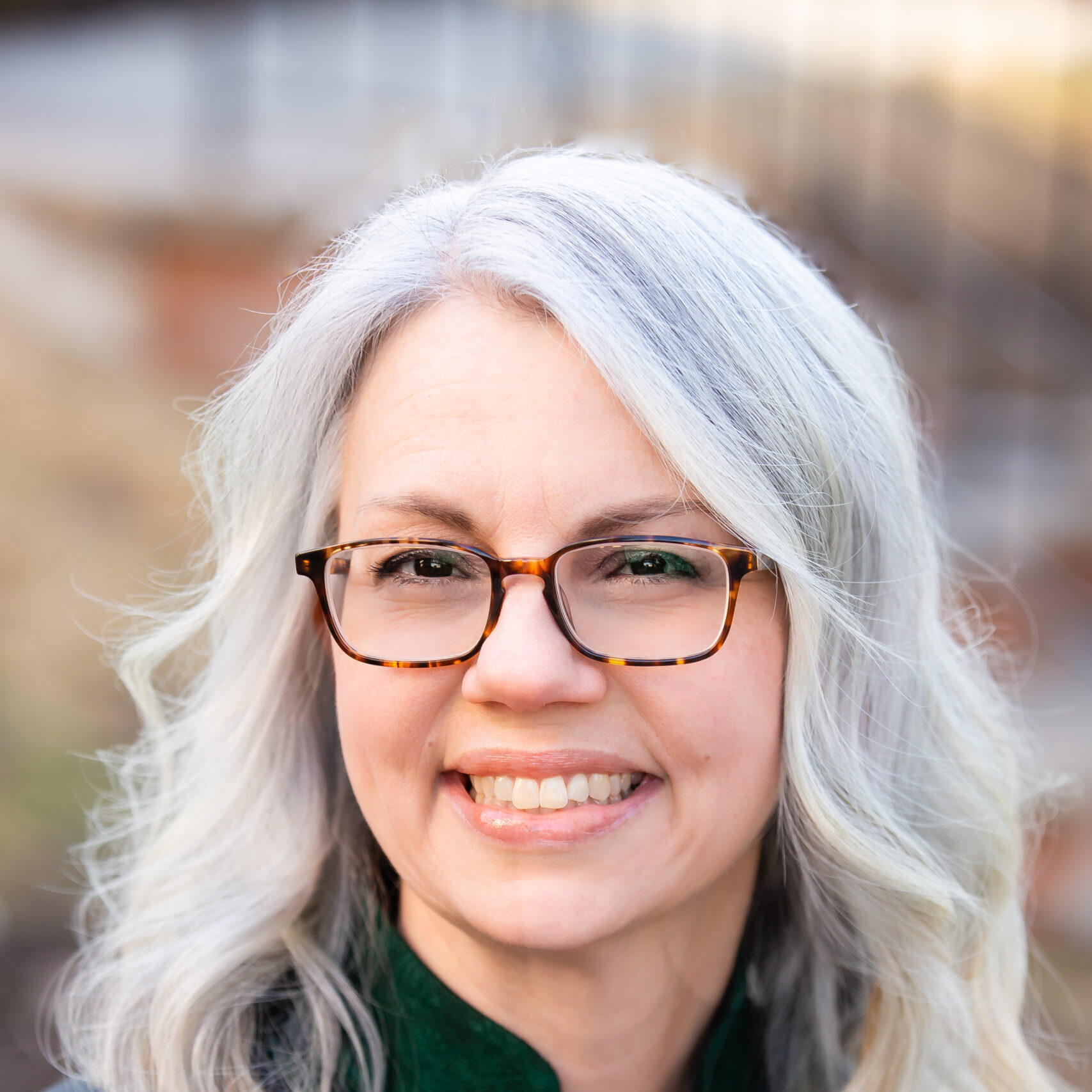
Caroline Radice
Dr. Caroline Radice, DACM, L.Ac. (NY & NJ), Dipl. Ac & CH (NCCAOM), has been studying and practicing Chinese Medicine with a specialty in Obstetrics and Gynecology since 1992. Her MSTCM is from ACTCM in San Francisco and her DACM from PCHS in San Diego. She is currently an online Gynecology Instructor at SIEAM in Seattle, VUIM in Virginia, and at the White Pine Institute specializing in the treatment of Fertility and Menopausal disorders.
Dr. Radice is an Advisory Board Member of the White Pine Circle and Graduate Mentorship Program (GMP), where she is also a Teaching Assistant and Mentor. She maintains a busy private practice in Maplewood, NJ and continues to pursue ongoing education in the scholarship of Chinese Medicine with Masters nationwide and other supporting institutions such as the NY Botanical Gardens courses in Plant ID and Botanical Latin, and Ethnobotany program at Cornell.
Sarah Rivkin
Sarah E. Rivkin, DAHM, LAc, Dipl. OM (NCCAOM) has been in private practice since 2006 focusing on reproductive health and pediatrics, Japanese acu-moxa techniques, classical herbal formulas, palpation, and qigong. She also devotes time to writing, editing, translating, and teaching. Her academic work draws on her background as both a clinician and a lover of text and language to explore the intersection of reading/writing and East Asian medicine.
Her articles have been published in Chinese Medicine and Culture, The North American Journal of Oriental Medicine (NAJOM), The Lantern, Convergent Points, and Medical Acupuncture. She is on the faculty at the Seattle Institute of East Asian Medicine (SIEAM), where she teaches classes on clinical writing and case analysis. In addition to an appearance on Qiological, she has presented her research at East Asian medical history conferences organized by the International Association for the Study of Traditional Asian Medicine (IASTAM), Max Planck Institute for the History of Science, Tel Aviv University, and Shanghai University of Traditional Chinese Medicine. She is also a peer-reviewer for Chinese Medicine and Culture, collaborates with colleagues on translating foundational Chinese medical texts, and is on the advisory board of White Pine Circle.
Discover the choices in dispensing herbs in your practice and explore the considerations in determining whether this option makes sense for your practice. This two-hour webcast presented by Sarah Rivkin and Caroline Radice offers participants comprehensive information and differing viewpoints on how their practices handle herbal dispensing. Ultimately, this will enable practitioners to examine their best choices, based on their practice style, infrastructure and goals. This event will also cover best practices in the direction and compliance of dispensing herbal medicine to patients. The participant will leave the session with actionable insights and tools to demystify different approaches and best practices in the dispensing and communication of herbal medicine, as well as a framework for thinking though whether having their own pharmacy makes sense.
● Learn how to choose the best herbs and reliable suppliers for your pharmacy.
● Understand the supplies needed to store and dispense herbs effectively.
● Master inventory management to keep your stock organized and accessible.
● Develop best practices for dispensing herbs and advising patients on their use.
● Understand the risks and benefits to having an onsite herbal dispensary versus using an outside pharmacy, including cost, sanitation, liability, and ethics.

Sydney Malawer (she/her) is a doctor of acupuncture and integrative medicine in Berkeley, CA who specializes in autoimmunity and dermatology through her private practice Tendervine Health. Her training is focused in Japanese Acupuncture, herbal medicine, and integrative medicine. She trains with Ikeda Masakazu and his students as well as with Dr. Mazin Al-Khafaji through the International TCM Dermatology Association. She completed her training in functional medicine through Dr. Aviva Romm’s Functional & Integrative Medicine Professional Training Program – however she had found that East-Asian Medicine aligns more effectively with her clinical approach and primarily utilizes functional medicine only when her patients have stalled in their progress. Sydney’s doctoral work focused on the management of chronic inflammatory issues using East-Asian medicine and conventional lab testing in the diagnosis, treatment, and progress tracking of these conditions and uses the findings from this original research in her approach to patient care. She also teaches classes on clinical dermatology, Japanese acupuncture, and integrative clinical lab testing in several master’s and doctoral programs.
Harness the insights of Jungian archetypes to build a practice where you are excited to go to clinic everyday and truly enjoy connecting with your patients. In this presentation, you’ll learn how to use archetypes theory to align your authentic personality and values with your business strategy, from choosing services and approaches that resonate with your innate self to crafting marketing messages that speak directly to the patients you’re meant to serve. Leave with actionable steps to build a practice that feels effortless, meaningful, and authentically you.
• To learn about Jungian archetype theory and how it is successfully applied in professional marketing.
• For participants to uncover their individual archetype.
• To understand how to apply Jungian archetype theory in building an East-Asian medicine practice – from what services to offer to how to attract the ideal patient/client.
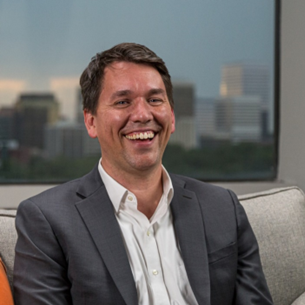
Vance Crowe is the founder of Legacy Interviews, a service dedicated to video recording individuals and couples as they share their life stories, ensuring that future generations have the opportunity to connect with their family history. Before establishing Legacy Interviews, Vance worked in various roles: he was a deckhand on an eco-tourism ship, served as a US Peace Corps Volunteer in Kenya, worked at a community public radio station, was employed at the World Bank, and served as the Director of Millennial Engagement at Monsanto.
Vance and his wife, have two daughters and a dog. Beyond his work with Legacy Interviews, he is frequently invited across the US and Canada to deliver talks on negotiations, communication strategies, and how to have better conversations. He also hosts two podcasts, “The Vance Crowe Podcast” and “The Ag Tribes Report.”
Interest-Based Communications (IBC) is a practical approach to professional interaction that fosters effective communication, resolves conflicts and identifies opportunities for collaboration. By prioritizing the underlying interests of all parties involved, IBC transcends traditional negotiation tactics to promote a collaborative environment where mutual benefits are the focus.
This session on IBC is designed to equip participants with the essential tools for interest-based negotiation, laying a robust foundation for fostering more productive and meaningful dialogues. Attendees will learn how to uncover hidden motivations, and construct conversations that lead to sustainable agreements and enhanced professional relationships.
• Collaborate in areas that would otherwise be conflicts.
• Learn how to prompt others to share vital information.
• Develop skills to present ideas in a way that motivates others to listen, understand, and contribute meaningfully.
• Gain insights into influencing decisions through effective communication and strategic approaches.
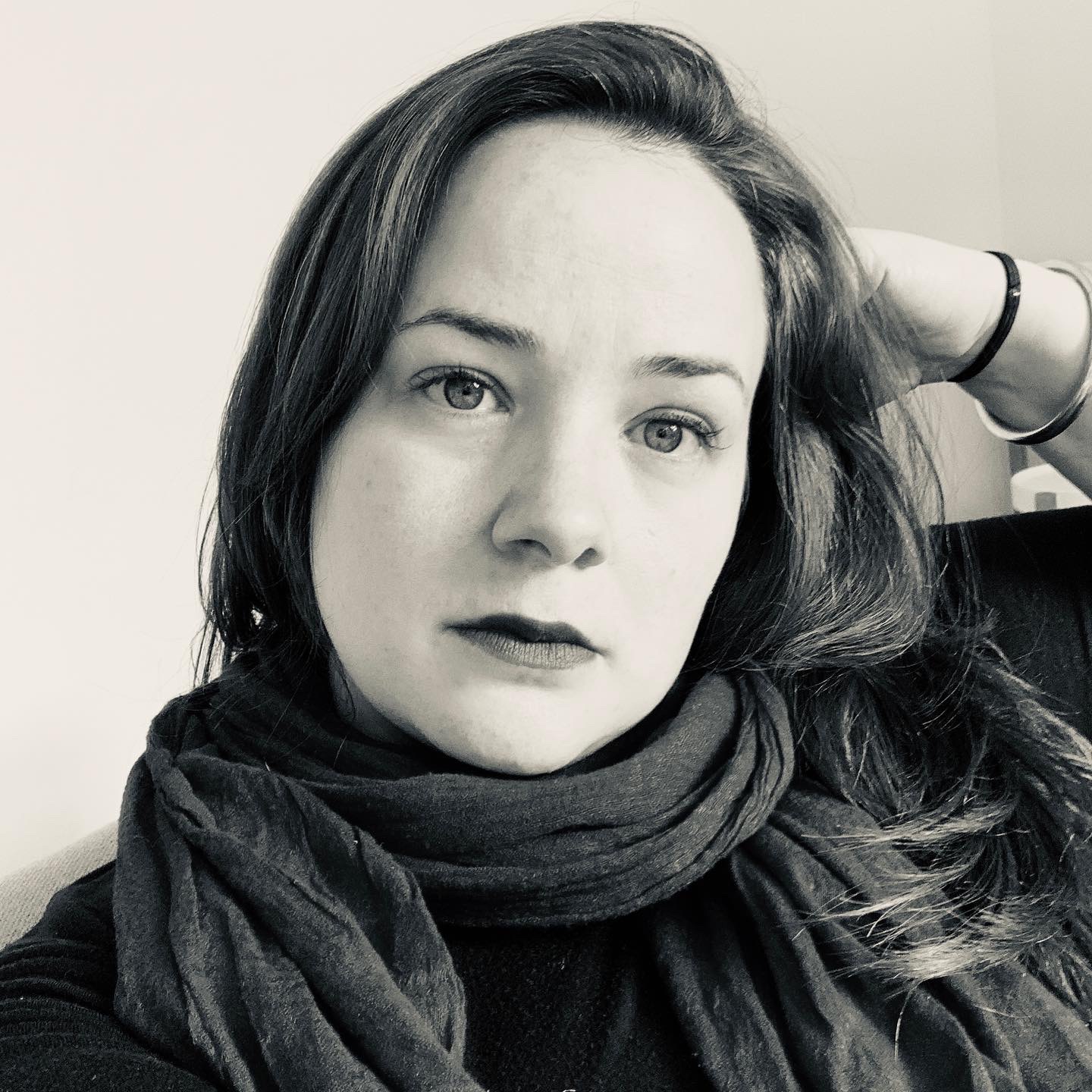
Dr. Heidi Lovie is a Chinese medicine practitioner with 20 years of experience in the field. Though she refers to herself as a general practitioner, her NYC private practice is centered on autoimmune diseases and women’s health. Her expertise in managing complex health conditions enables her to offer personalized care that addresses underlying imbalances.
Beyond her clinical practice, Dr. Lovie is an educator who has lectured, taught, and clinically supervised for over a decade. She often mentors Chinese medicine practitioners new to the field, providing them with the tools to succeed in today’s competitive market. With a distinctive blend of clinical expertise and entrepreneurial insight, her commitment to both holistic healing and practical business strategies ensures that her mentees thrive on their individual journeys toward success and well-being in business.
Starting a private practice can feel overwhelming, especially when it’s a make-or-break situation and you’re working with limited resources. You’ve conquered the technical aspects of acupuncture, but now it’s time to dive into the managerial and entrepreneurial side of putting that into practice; areas that often feel unfamiliar or outside your comfort zone. This talk is for those who are ready to turn their skills into a viable business despite financial constraints. We’ll cover how to calculate your thriving rate, start with limited resources, and create a patient avatar to guide your decisions. You don’t need a big budget to succeed—just focus, clarity, and a solid plan. Let’s turn your passion into a thriving practice.
• Determine Your Thriving Rate: Participants will learn ways to calculate their rates for services based on expenses, desired income, and long-term sustainability.
• Develop Your Ideal Patient Avatar: Participants will discover the power of creating a detailed profile of their ideal patient to personalize their marketing, streamline decision-making, and align services with patient needs.
• Understand Business Structures: Participants will explore the differences between sole proprietorships, LLCs, and PLLCs to make informed decisions about their practice’s legal structure.
• Where to delegate: Participants will identify key places in practice where it makes sense to delegate to a professional (i.e. bookkeeper or CPA) and understand their roles in ensuring financial and operational stability.
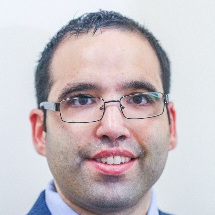
Tiago Horta Reis da Silva is a Lecturer in Nursing Education (Academic Education Pathway) at King’s College London, bringing a diverse and multidisciplinary expertise to his role. His academic credentials include a Bachelor of Science in Nursing, a Bachelor of Science in Traditional Chinese Medicine, a Master of Science in Emotional Intelligence, Counselling, and Neuro-Linguistic Programming (NLP), a Master of Business Administration (MBA), and a Master of Science in Traditional Chinese Medicine. With extensive experience across higher education institutions and the National Health Service (NHS), Tiago plays a pivotal role within the Adult Nursing Department. His responsibilities include contributing to the development, administration, and delivery of BSc and MSc programs, as well as supporting teaching across various modules. He is actively involved in admissions processes, interviews, and assessments, demonstrating a commitment to excellence in academic standards. Tiago is the author of multiple articles and book chapters, showcasing his contributions to advancing knowledge and practice in nursing, emotional intelligence, and integrative healthcare. His publications reflect his dedication to interdisciplinary research and innovative approaches to education and healthcare. He is a Senior Fellow of the Higher Education Academy, a Fellow of the Royal Society of Medicine, and a Fellow of the Faculty of Nursing and Midwifery at the Royal College of Surgeons in Ireland. His professional affiliations, scholarly achievements, and interdisciplinary background underscore his commitment to advancing nursing education and fostering innovative approaches to healthcare and pedagogy.
This presentation explores the cultivation of Emotional Intelligence (EI) among East Asian medical providers, emphasizing its role in enhancing patient care, team collaboration, and self-awareness. Attendees will gain insights into the cultural dimensions of EI, practical strategies for integrating EI into daily practice, and how to navigate the unique challenges faced in East Asian medical contexts. By fostering empathy, communication, and resilience, providers can improve both personal well-being and professional effectiveness.
• Understand the core components of Emotional Intelligence and their relevance to medical practice.
• Explore cultural influences on Emotional Intelligence in East Asian healthcare settings.
• Learn strategies to enhance self-awareness, empathy, and interpersonal skills.
• Apply EI principles to improve patient care and team dynamics.
• Reflect on the role of EI in managing stress and promoting resilience.
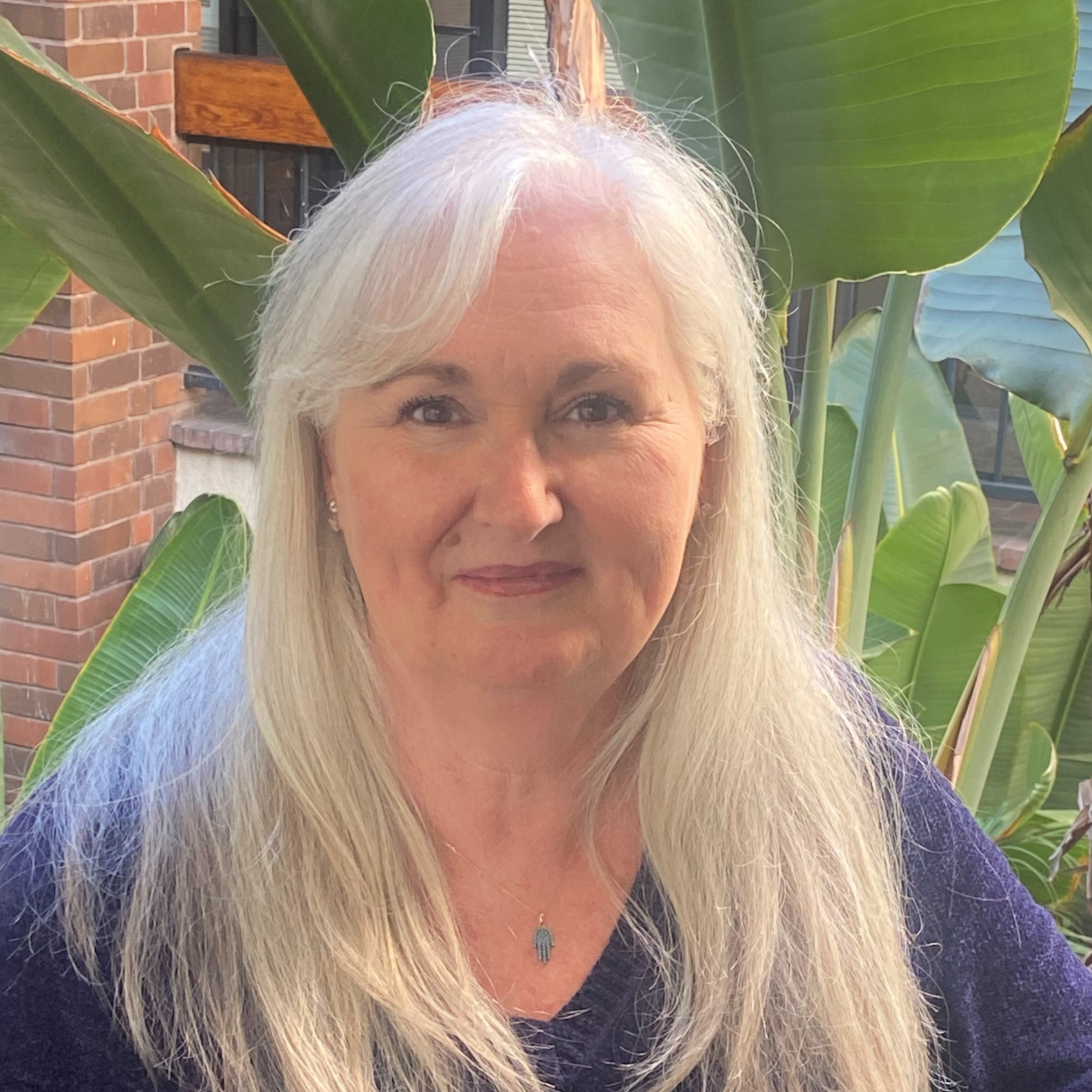
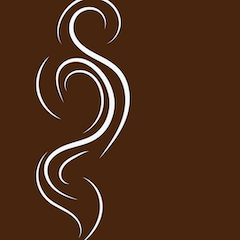
Yvonne Farrell
Dr. Farrell has been practicing and teaching Chinese Medicine and Channel Theory since 1996. Her focus is on empowerment of students and patients so that they will embody the spiritual aspects of Chinese Medicine and make them their own. She believes that self-cultivation, self-knowledge and critical thinking are essential in developing capacity as a practitioner of Chinese Medicine.
Yvonne is the author of two books: Psycho-Emotional Pain and the Eight Extraordinary Vessels and her latest, Acupuncture for Surviving Adversity published by Singing Dragon. She has also written several articles for Medicinal Roots Magazine. She teaches continuing education courses in the US and internationally.
Henry McCann
Coming Soon

Sara M. Lomax is the President and CEO of WURD Radio, LLC, Pennsylvania’s only African-American owned talk radio station. She is credited with transforming WURD Radio from a legacy talk radio station to a multimedia communications company providing cutting edge, original programming on air, online and through community events. In 2017, Sara led the expansion of 900AM-WURD to the FM dial, now simulcasting on both 900AM and 96.1FM. In 2018, Sara spearheaded the launch of an environmental justice journalism platform called ecoWURD.com. And in 2019 she launched an initiative called Lively-HOOD focused on jobs, career readiness and entrepreneurship to address the persistent wealth gap in the Black community. In 2021, she co-founded URL Media, a network of Black and Brown owned and led media organizations that share content, distribution and revenues to increase their long-term sustainability. Prior to her work with WURD and URL, in 1992 Sara co-founded HealthQuest: Total Wellness for Body, Mind & Spirit, a trailblazing African-American consumer health magazine that grew from a quarterly publication to a bi-monthly with a national circulation of over 500,000.
A graduate of the University of Pennsylvania and Columbia University Graduate School of Journalism, Sara has completed the Media Transformation Challenge at Harvard Kennedy School and in June completed the John S. Knight Journalism Fellowship at Stanford University. Sara has received numerous awards and served on a variety of boards including the Kimmel Cultural Campus, the Pennsylvania Academy of the Fine Arts and Arcadia University. An avid yoga and meditation practitioner, Sara is also co-founder of Philadelphia’s People of Color meditation group. She is the proud mother of three sons, Langston, Elijah and Julian.
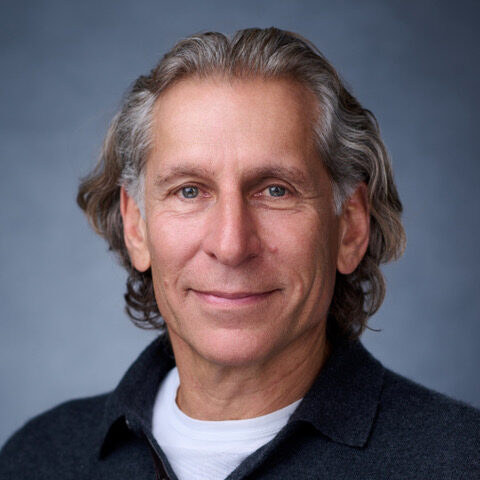
Mazin graduated as Doctor of Chinese Medicine from the Shanghai College of Traditional Chinese Medicine in 1987. Since then, he has been in full time practice entirely devoted to three main areas – autoimmune disease, allergic disease, and skin disease.
He lectures widely all over the world on these subjects and over the past 20 years has run the Dermatology Diploma Programme in both Europe & North America (www.mazin-al-khafaji.com other lectures are also available online), all graduates of this programme automatically becoming members of the International TCM Dermatology Association (www.tcmdermatology.org).
He has developed the unique Dermatology-M range of topical products and herbal functional cosmetics from Chinese herbal ingredients to address many common skin disorders (www.dermatology-m.com & www.kamwoherbs.com).
He is the author of numerous articles and co-author of the international textbook A Manual of Acupuncture.
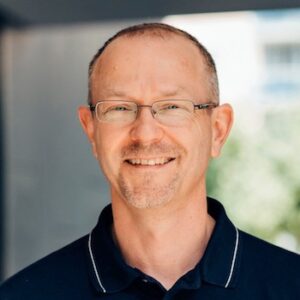
Andreas has been working as an acupuncturist in his own clinic near Munich, Germany, since 2008. Originally, he earned a PhD in psychology, conducted research, and published on behavior and communication in Asian cultures. In 2009, he graduated in Chinese Medicine from the European Institute of Oriental Medicine in Munich. Since 1996, he has made regular visits to South Korea to learn Qigong and traditional Korean medicine.
From 2004 to 2010, he completed training in Korean Hand Acupuncture at the Koryo Sujichim Institute in Seoul. He received additional education and clinical training in Korean medicine with various teachers and doctors, including at Kyung Hee University in Seoul and Busan National University. In recent years,
Andreas has studied Saam and Sambu acupuncture primarily with Dr. Yoo-Ong Jung, Vice President of the Korean Society of Saam Acupuncture Therapy. Andreas has been teaching Saam acupuncture since 2015. He is the (co-)author of “SaAm Acupuncture Textbook: Korean Four-Needle Technique,” published by Müller & Steinicke in Germany.
Title:
Advanced Saam Acupuncture: Combining Saam strategies “freestyle” & tailoring point combinations to constitution
Summary:
This presentation will have two parts. First, we consider the flexible use of the Saam four-needle technique, which is now performed by an increasing number of acupuncturists in Korea and has moved away from a relatively rigid application of the predetermined point combinations. Here, multiple four-point combinations can be selected simultaneously in one treatment, and only one, two, or three points from the prescribed four-points can be applied to build a hierarchy of treatment strategies. We will consider possible criteria for selecting strategies and points.
Second, we will discuss how to individualize the orthodox Saam point combinations by changing some of the points to better fit the strategy according to the patient’s constitution or pathology. For this, we will discuss the basics of Dr. Kim, Hong-Gyeong’s theory of triple Five-Element-characteristics of the Shu Transport points, his constitutional theory and how this can be applied to the Saam point prescriptions.
In This Presentation We Will:
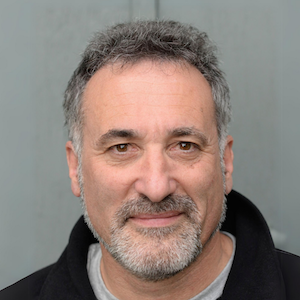
Daniel graduated from the New England School of Acupuncture in 1999. He has been in private practice in Charlottetown, Prince Edward Island, Canada since then. He founded and chairs the Association of Registered Acupuncturists of Prince Edward Island.
For twenty years, Daniel’s clinical work centered around Japanese palpatory approaches, primarily those in the Nagano/Matsumoto lineage (but also including Keiraku Chiryo), expanding into an integration he discovered with Ren Ying Cun Kou pulse diagnosis. This work involved what he calls a reverse engineered ‘palpate first, ask questions later’ approach. More recently, Daniel has found himself in a radical clinical transformation via the elegant Saam fusion of Zhou Yi trigrams, 5 Phases and Six Levels.
Daniel marvels at the fact that even after two decades in practice, every day is novel, new and fascinating.
Title:
Intelligence and Infrastructure: Saam and the Border
Summary:
We will explore the unique potency of Saam acupuncture to enliven the process of clinician development, from the didactic beginnings of technical repetition to the deep archetypal essence connection.
Most of us have access to two major streams of Saam lineage, the teachings of Sunim Doam via Toby Daly and those of Hong Gyeong Kim. We will use the synthesis of these two streams to explore the theme of borders, boundaries and space.
How does the patient experience and manage the inside / outside relationship? What gets in? What stays out? What is the influence of sense of space? And how can Saam be used to serve these issues? The Shao Yang / Jue Yin pairs (SJ/Liver and PC/GB) and the Tai Yang system (UB/SI) will be featured.
We will illuminate a key distinction between Infrastructure (walls and border crossings) and Intelligence (data-gathering). Cases from clinic will be used throughout the presentation.
In This Presentation We Will:
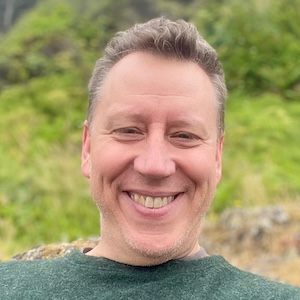
David founded Red Earth Acupuncture and Method Herbs near Atlanta, GA. He received his MSOM from AIMC in Berkeley, CA in 2007.
Early at AIMC he began studying with the Iwashina Anryu (aka ‘Dr. Bear’), continuing to study with and assist Dr. Bear teach until his passing in 2022.
David developed a modular system, reproducing Zhang Zhong Jing’s formulas as concentrated extracts in their original dosages and ratios. This led him to the study and use of traditional Sheng Fuzi pao zhi in formulas.
David was introduced to classical method through the late Taiwanese master Ni Haisha and his brother Ni Boshi. He enrolled in ICEAM with Arnaud Versluys in 2011, becoming a Diplomate in 2013, then a Clinical Fellow in 2015. In 2022 he began teaching the Fukushin classes, and in 2024, became a clinical supervisor.
David has two children, attends Atlanta Soto Zen Center, and teaches Shorinji Kempo.
Title:
Saam and its Clinical Place within the Wu Yun Liu Qi Cosmology
Summary:
In this class we explore the classical and clinical relationship between the Heavenly Stems (天干), Earthly Branches (地支) and Six Qi (六氣). Saam holds unique place in the cosmology of Chinese Medicine, by utilizing the relationship between the Five Phases and Six Qi (六氣) to rebalance disharmony within a Yin Yang Six Qi relationship.
In this lecture we explore classical underpinnings of the Saam model in the Su Wen, and its broader clinical relationship between the Great Movements and Heavenly Stems (五運天干) and Earthly Branches (地支).
Our objective is to gain a cleaner understanding of when and why to use the relational, Five Movements; environmental, Six Qi; or material, Earthly Branches models in your practice.
In This Presentation We Will:
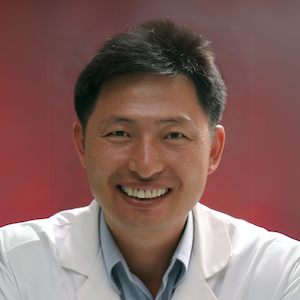
Andreas has been working as an acupuncturist in his own clinic near Munich, Germany, since 2008. Originally, he earned a PhD in psychology, conducted research, and published on behavior and communication in Asian cultures. In 2009, he graduated in Chinese Medicine from the European Institute of Oriental Medicine in Munich. Since 1996, he has made regular visits to South Korea to learn Qigong and traditional Korean medicine.
From 2004 to 2010, he completed training in Korean Hand Acupuncture at the Koryo Sujichim Institute in Seoul. He received additional education and clinical training in Korean medicine with various teachers and doctors, including at Kyung Hee University in Seoul and Busan National University. In recent years,
Andreas has studied Saam and Sambu acupuncture primarily with Dr. Yoo-Ong Jung, Vice President of the Korean Society of Saam Acupuncture Therapy. Andreas has been teaching Saam acupuncture since 2015. He is the (co-)author of “SaAm Acupuncture Textbook: Korean Four-Needle Technique,” published by Müller & Steinicke in Germany.
Title:
Summary:
In This Presentation We Will:
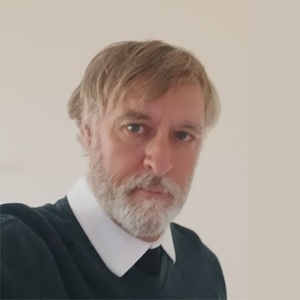
Evan Mahoney is a Doctor of Acupuncture and Oriental Medicine having obtained his degrees from Samra University and Emperors College in 2011. He specializes in the treatment of pain using VST and Kinetic Acupuncture and Saam Acupuncture for all other conditions. Dr. Evan emphasizes a meditational approach in treatment with Saam, coaching the patients to meditate on the acupuncture points.
Since 2013 he has been conducting research on the Interpretation of Dreams based on Saam Acupuncture’s Three Levels of Human Needs. He is currently practicing acupuncture in Southwest Florida.
Title:
Saam Acupuncture’s “Organ Centered Consciousness”
Summary:
Saam Acupuncture ‘Organ Centered Consciousness’ model is based off of four legs. The first is a student’s introduction to the theories of TCM and how they identify, internalize, and relate to such medicine.
The Second and Third Legs are based on PTSD which is a conscious phenomena related to the Kidneys and Dr. John Sarno’s ‘Unconscious Rage’ correspondent to Saam Acupuncture Gall Bladder Channels, Revolutionary Rage or Fury.
The Fourth Leg is the Interpretation of Dreams which is based on Saam Acupuncture’s Three Levels of Human Needs.
In This Presentation We’ll:
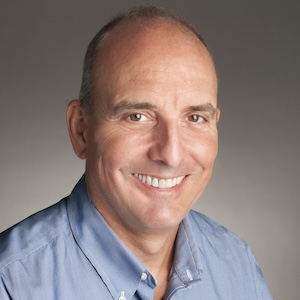
I am a licensed acupuncturist, dietitian, and Chinese herbalist. I completed my Chinese medicine cover charge at NESA in 2006 and have taught Western Nutrition there since 2007.
I am incredibly grateful to my most influential teachers, Sharon Weizenbaum and Toby Daly who showed me, with different modalities, how clinically effective this amazing medicine can be if you look well beneath the surface.
I have treated patients with Saam almost 100% since early 2019 and run a busy clinic in Stow, MA.
Title:
Stepping into Saam – How to Navigate Treatments when “Saam doesn’t work”
Summary:
This discussion is ideal for those who practice the Saam Buddhist monastic tradition of Toby Daly’s teacher. This talk is especially for those new to the system or those who feel they are not getting their expected clinical results. Toby has transmitted a beautifully efficacious heart- centered medicine that successfully treats a wide range of conditions. Evaluating channel pairs can be confusing and sometimes we need to connect deeper and look below the surface to find our diagnostic patterns. When results are not obtained, it can often be because of an error in our diagnosis or treatment. Sloppy diagnosis and inaccurate needling can lead to unsatisfactory results. I will share my experience of how I navigated disappointing outcomes in my 5+ years of practicing this tradition
In This Presentation We Will:
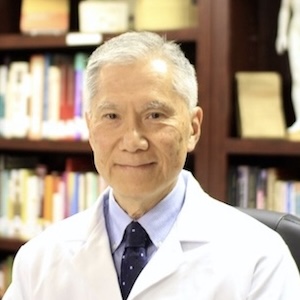
Hon graduated from the Maryland Institute of Traditional Chinese Medicine, had clinical training at the Shanghai College of Traditional Chinese Medicine, studied Chinese herbal medicine at the TAI Sophia Institute, learned Medical Qigong at the International Medical Qigong College, and completed a DAOM program at the Virginia University of Integrative Medicine (VUIM). He’s owner of the Sports Edge Acupuncture Clinic, and an adjunct instructor at VUIM.
Hon first learned Saam Acupuncture from Dr. Tae Chong Choo, his DAOM advisor. Dr. Choo is founder of the Association of International Saam Acupuncture (AISA). During quarterly AISA Zoom meetings, Dr. Choo lectured on Saam as well as on Korean Constitutional Medicine. Hon continues studying with Dr. Choo and has taken Toby Daly’s online classes. Saam has become an integral part of his clinical practice.
Title:
Saam Acupuncture, Korean Acupuncture: History, Theory & Techniques
Summary:
My presentation will include a brief history, theory, and techniques of Saam acupuncture. The PowerPoint slides I’ll share with you belong to my teacher, Dr. Tae Cheong Choo.
My talk will highlight Dr. Choo’s teachings on the “Comprehensive Method” of needling, the Mindpath theory, the 6 Qi and 5-element Physical Building Analogy, and the Three Levels of Human Needs (Mindpath Meridianology) with examples of clinical examples from my own practice
In This Presentation We Will:
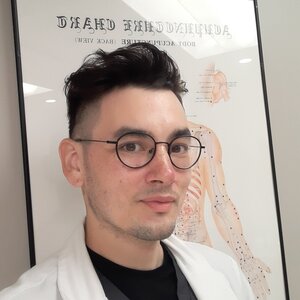
I entered the East Asian Medicine field after a series of acupuncture and herbal treatments were able to permanently resolve a debilitating digestive illness. Since then, I have dedicated myself to empowering others to transform their lives and attain flourishing health with East Asian Medicine.
I received my doctorate at the National University of Natural Medicine in Portland, Oregon, where my training focused on the theory and application of classical medical texts. I then spent four years as part of the Division of Integrative Medicine at the Memorial Healthcare System in South Florida and have taught Korean Acupuncture and Herbal Medicine at Wongu University in Las Vegas. I currently practice in Orange County, California, at a clinic specializing in neurological conditions and autoimmune diseases.
Title:
Cultural, Classical, and Clinical Contexts for Saam Acupuncture
Summary:
This presentation will discuss the theory and application of Saam acupuncture.
We will begin by situating Saam Acupuncture in the broader context of Korean history and Korean Medicine, highlighting the unique features of Korean Medicine and showing how these features are present in Saam Acupuncture. We will go on to review the energetics of Saam Acupuncture channels and prescriptions, with particular emphasis placed on psycho-emotional dynamics through the Three Levels of Human Needs theorized by Kim Hong Kyung (김홍경 金洪卿).
We will explore the application of Saam Acupuncture to treat commonly encountered conditions in the contemporary North American Clinic. Throughout the presentation we will be connecting the system of Saam Acupuncture to classical principles found in the Huangdi Neijing, the Nanjing, the Shang Han Lun, and the Korean Medical text Dongui Bogam.
In This Presentation We Will:
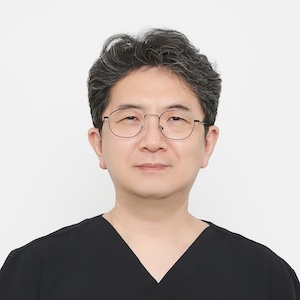
Junghwan Lee is a researcher of meridian-based psychotherapy and the developer of Mind Acupuncture. He holds a doctoral degree in Oriental psychotherapy. He has been researching and clinically using Saam Acupuncture and Eastern and Western psychotherapy for nearly 30 years.
Mind acupuncture is the result of his long-term research. He compares the development of mind acupuncture to the creation of the iPhone. He says that Mind Acupuncture is an innovative treatment method that is completely different from existing treatment methods and is patient-centered, intuitive, easy, and effective like an iPhone. He says that mind acupuncture can actively complement or replace existing Eastern and Western psychotherapy methods.
He is the president of the Saam Acupuncture Society and the Mind Acupuncture Association. He hopes that acupuncture practitioners around the world will learn, use, and study mind acupuncture. He is actively introducing mind acupuncture in various countries. He has a mind acupuncture group on WhatsApp. Through that group, he regularly conducts online workshops.
Title:
Mind Acupuncture: An Expansion of Saam Acupuncture for Rapid Relief of Negative Emotions and Thoughts
Summary:
Mind acupuncture is a Saam informed meridian-based psychotherapy modality. Mind acupuncture is firmly rooted in traditional East-Asian medical theory. The fundamental basis being that qi (energy) instability causes negative emotions and thoughts. Through the utilization of the 5 Shu points and Saam acupuncture techniques, we learn to stabilize the energy of the 5 elements and 6 Qis.
These strategies are extremely efficacious in releasing negative emotions and have the ability to address daily stress, depression, anxiety, PTSD, and insomnia by reestablishing healthy regulation of stressors and emotions.
The approach has three fundamentals: Stating treatment goals, strengthening self-regulation of the meridian system, and interlacing treatment goals with meridian functions.
This method can also have profound efficacy in the dredging of hidden unconscious conflict allowing the liberation of spirit through Qi-transformation and Metaphor techniques.
The primary techniques used in the Mind Acupuncture method that will be taught are Basic Circulation Acupuncture and Saam Acupuncture.
Mind acupuncture is easy to learn and provides quick results, offering liberation from negative emotions and expanding positive affect. Mind Acupuncture has received accolades and recognition when it was introduced to audiences at Oxford University as “The Emergence of New Traditional Acupuncture”, ICMART 2023(Amsterdam), and Dagfa 2022(Frankfurt).
In This Presentation We Will:
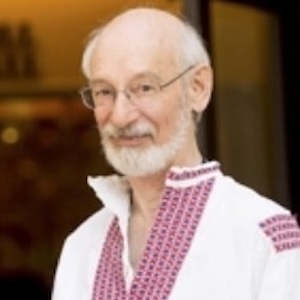
When I finished my Western medical training in 1972, I had never heard of acupuncture. I was offered a job as physician in an acupuncture clinic in 1973 with on-the-job training from a group of Korean practitioners, one of whom, Chae Lew, agreed to accept me as an apprentice. I spent over ten years working and studying with him. Through him I met many of the leading practitioners of Korean acupuncture, who later became teachers for me themselves, including Tae Woo Yoo, the originator of Korean Hand Acupuncture, and Kuon Dowon, the originator of Korean Constitutional Acupuncture.
In 1974 I began over ten years of study with Professor JR. Worsley. I later studied in China and Japan as well as Korea.
From 50 years of study and practice I formulated my own style I call Constitutional Conditional Acupuncture, which I have taught internationally, including 3 times in China.
Title:
Saam and The Varieties of Korean Acupuncture
Summary:
This presentation will explore its history and the many styles of practice it has engendered in Korea as well as elsewhere. The basis of Saam acupuncture is the 4-needle technique. Tonifying, sedating, heating and cooling formulas will be reviewed plus other 4-needle combinations that break the standard rules. These are due to the use of Saam theory in both Constitutional and Conditional aspects of treatment. The differences between these two aspects as they relate to diagnosis and treatment will be explained.
The speaker’s own style of acupuncture follows this approach, and has been taught worldwide including three times in China. There are several of the author’s books that can augment this presentation.
Grasping the Donkey’s Tail
Unraveling Mysteries from the Classics of Oriental Medicine
The Compleat Acupuncturist
A Guide to Constitutional and Conditional Pulse Diagnosis
In the Footsteps of the Yellow Emperor
Tracing the History of Traditional Acupuncture
The Book of Changes In Traditional Oriental Medicine
An edited transcript of classes taught in 1983 and 1984
Closing The Circle
Lectures on the Unity of Traditional Oriental Medicine by Peter Eckman, M.D., Ph.d., M.Ac. (U.K.) and Stuart Kutchins, C.A.
In This Presentation We Will:
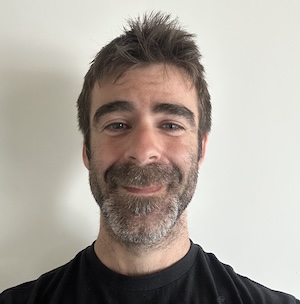
From the beginning of Phil Settels’ study of Chinese Medicine in 2008, he has been drawn to both classical herbalism and orthopedic acupuncture. Upon graduating in 2011 he was asked to help put together a doctorate program at ACCHS, and he was able to build a curriculum focusing on these two areas of specialization. Running the program allowed Phil to walk the path of an eternal student, and he has had the great fortune of studying with amazing teachers in both the herbal and acupuncture domains.
Phil continues to practice, to teach, to run the doctorate program, and to learn. Among his most recent inspirations is the Saam Acupuncture system, as taught by Toby Daly. This has allowed him to use the five-phase and six-conformation principles that guide much of his herbal thought in the diagnosis and treatment using acupuncture, in a way that is beautifully complementary.
Title:
Saam and Jing Fang: Beyond Herbalized Acupuncture
Summary:
This course will explore the 12 archetypes of channel system excess from the Saam acupuncture system, and relate them to classical formulas (Jing Fang). In particular, the herb presentation (yao zheng) and formula presentations (fang zheng) styles of Shanghan Lun herbalism will be emphasized.
The goal is not to establish one-to-one correlations (ie. Spleen Supplementation treatment is equal to Wenjing Tang), but rather specific characteristics of the organ system patterns are related to formulas, so that each organ system pattern could relate to multiple formulas, and combinations of organ system patterns could relate to specific formulas.
In This Presentation We Will:
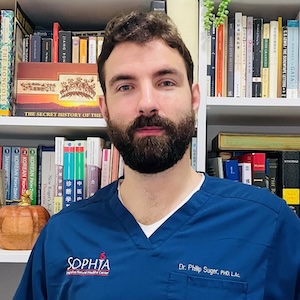
Born in San Francisco, CA and raised in Charlotte, NC. During my freshman year at Penn State, I was introduced to the Dao De Jing which led me down a rabbit hole of ancient Chinese culture. From which I learned about Chinese medicine. Having decided to pursue a career in this field I left for China after I graduated. At first, I was at the Beijing University of Chinese Medicine for an advanced studies program. Upon returning to the states, I enrolled at the Oregon College of Oriental Medicine to pursue my master’s degree.
Afterward I moved back to China to earn my doctoral degree at the Nanjing University of Chinese Medicine. I first began practicing in Houston, TX. With the upheaval of the pandemic my family and I moved to Northern California until I was provided with an offer to come work at an integrative clinic in Connecticut.
Title:
The History and Development of Saam Acupuncture
Summary:
Despite the increased interest in Saam acupuncture there is very little known about its origins and development. This presentation is designed to shine some light on how the modern Saam acupuncture came to be. The first portion of the presentation will describe the environment in which Saam acupuncture developed in detailing the governmental, social, medical and religious influences.
The second major development in Saam acupuncture is the writing of a collection of case studies and commentary attributed to an individual named Jisan sometime after 1742. The third section will delve into what we don’t currently know about the development of Saam acupuncture. The final portion will examine the modern era and the multiple streams of Saam acupuncture that have developed during this period.
In This Presentation We Will:
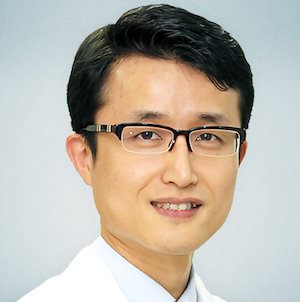
Sanghoon Lee is a professor at Kyung Hee University’s College of Korean Medicine in South Korea. He obtained his MD in Korean Medicine in 1995 and completed his clinical residency at KHU Medical Center in 1998. Dr. Lee is a prominent researcher and practitioner in acupuncture and integrative medicine with numerous research papers and books.
In his role as Director of the International Education Institute of Korean Medicine and Deputy-Director of the East-West Medical Research Institute (a WHO Collaboration Center for Traditional Medicine), Dr. Lee leads efforts to integrate traditional medicine into modern healthcare systems.
Having served as a visiting scholar at Johns Hopkins School of Medicine and UC Irvine School of Medicine, Dr. Lee’s influence globally through lectures and collaborations. Presently, he is deeply engaged in exploring and developing acupuncture mechanisms and their applications in digital healthcare trends.
Title:
Saam Acupuncture Unveiled: Literature Review and Its Clinical Application in Korea
Summary:
Saam Five Element Acupuncture is a Korean meridian-based acupuncture system. Saam focuses on achieving a constitutional systematic balance of organ function, rather than focusing solely on acute and local strategies. The treatments are accomplished by utilizing prescriptions of Five Element transport points. There are various approaches within the Saam Acupuncture model for selecting the primary channel for treatment. The approach I will be presenting employs three criteria to arrive at a three-dimensional treatment.
The criteria include:
1) The primary channel pathway related to the chief complaint.
2) The Zang-Fu influences based on Five Element theory.
3) Deficiency and excess patterns based on the Six Conformation factors.
This lecture aims to provide a comprehensive overview of Saam Acupuncture based on literature reviews and to elucidate its clinical applications in Korea.
In This Presentation We Will:
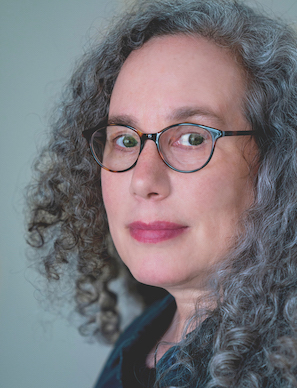
My passion for East Asian Medicine is an ongoing inquiry and deep appreciation for what has shaped medical theory, biases, and strategies. As a perpetual student of medical arts and practice, I am more than a technician; I operate as a critical thinker and a strong collaborator in the healing process. My studies and personal exploration lead me on a continuing journey, alongside my patients, to unravel the mysteries and pursuits that create a life well lived.
Sharon graduated with Honors from Tri-State College of Acupuncture in 2001 and has been practicing in Philadelphia since. Prior to her groupie-like devotion to the Saam community, she was a student of 88th generation Daoist priest Jeffery Yuen for over ten years. She is a general practitioner with a concentration in Saam acupuncture, musculoskeletal dysfunction and herbal medicine.
Title:
Open the Portals – Bearing Witness to What Presents
Summary:
Bearing witness as a health care practitioner requires us to be present and attentive to the truth of another’s experiences. It is also an opportunity to hone our Saam diagnostic skills and enhance our ability to serve. We will be looking at videos and getting seasoned practitioner’s diagnostic observations relating to morphology, affect and temperament from within the Saam lens. Seeing through the eyes of skilled practitioners, the aim is to expand our clinical prowess by being able to better understand, categorize and utilize the rich bounty of diagnostic clues that present in every clinical encounter.
In This Presentation We Will:
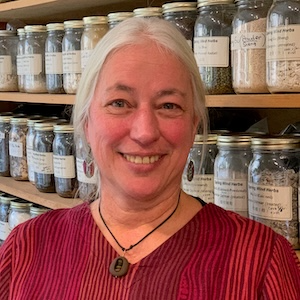
Sharon Weizenbaum has been studying and practicing East Asian Medicine for over forty years. Her interests primary interests have included herbal obstetrics & gynecology, herbal medicine based on the Han dynasty classics (Nèi Jīng, Nàn Jīng, Shén Nóng Běn Cáo Jīng, and Shāng Hán Zá Bìng Lùn) as well
as the Fǔ Xíng Jué Yòng Yào Fǎ Yào and acupuncture based on Han dynasty classic principles. Sharon found that Japanese traditions of acupuncture more faithfully followed these principles and her acupuncture style grew out of her study with Japanese teachers, including Kiiko Matsumoto, Stephen
Birch, and Koei Kuwahara. In 2019, she began her study of Saam with Toby Daly which was followed by a visit to Thomas Sørensen’s clinic in Copenhagen, DK. Five years on from initial contact with Saam, Sharon’s understanding and practice of acupuncture is influenced by all of the above.
Sharon practices in Western Massachusetts, living on a small farm with her farmer daughter Zoe and many farm animals. Sharon is the founder of White Pine Circle, an online educational and community support platform and teaches a two-year comprehensive program called The Graduate Mentorship Program in which she offers her unique approach to classical East Asian herbal medicine with an emphasis on clear diagnostic skills and flexible use of formulas.
Title:
Classical Perspectives on Supplementing, Draining and Flavors in Relation to Saam Acupuncture
Summary:
In this lecture, Sharon will explore the concepts of supplementing, draining and shunting methods based on her understanding and translation of portions of the Huáng Dì Nèi Jīng.
Much of this understanding also comes from her translations of the work of Dr. Zhāng Dàchāng on the Fǔ Xíng Jué Yòng Yào Fǎ Yào, (Assisting Certainty in the Important Methods for Applying Herbs for the Zang Fu). Sharon has discovered that Dr. Zhāng’s writings are aligned with our root classics, the Huáng Dì Nèi Jīng and the Nán Jīng than any writings she has ever come across. These profound views were echoed by Sharon’s studies withThomas Sørensen.
In this lecture, Sharon will discuss what we are doing when we supplement and drain/shunt according to an accurate reading of the text. This requires some understanding of what channels are and how the five phase points function. From this foundation, Sharon will connect our use of flavors in herbal formulas to our work using the four points of Saam. Again, this is based on the classics and Dr. Zhang’s writings.
In This Presentation We Will:
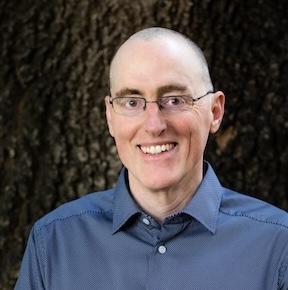
Toby began studying Chinese medicine in 1997 with a Korean monk trained in the Saam tradition. He earned his master’s degree in Traditional Chinese Medicine in 2002 upon completion of training at the American College of Traditional Chinese Medicine in San Francisco and Chengdu University in China.
During his four years of training in San Francisco, he interned with the prominent acupuncturist Dr. Angela Wu and learned to apply the lofty theories he was studying in school into the pragmatic setting of a busy clinic. In 2013, he developed the Chinese Nutritional Strategies app to provide digital access to the wealth of Chinese dietary wisdom.
In 2016, he completed a PhD in Classical Chinese Medicine under the guidance of 88th generation Daoist priest Jeffery Yuen. In 2021, he developed the Chinese Medical Characters app to enable direct access to foundational Chinese medical terms and concepts.
For the past three years he’s been teaching the Saam method as it was taught to him by his teacher.
